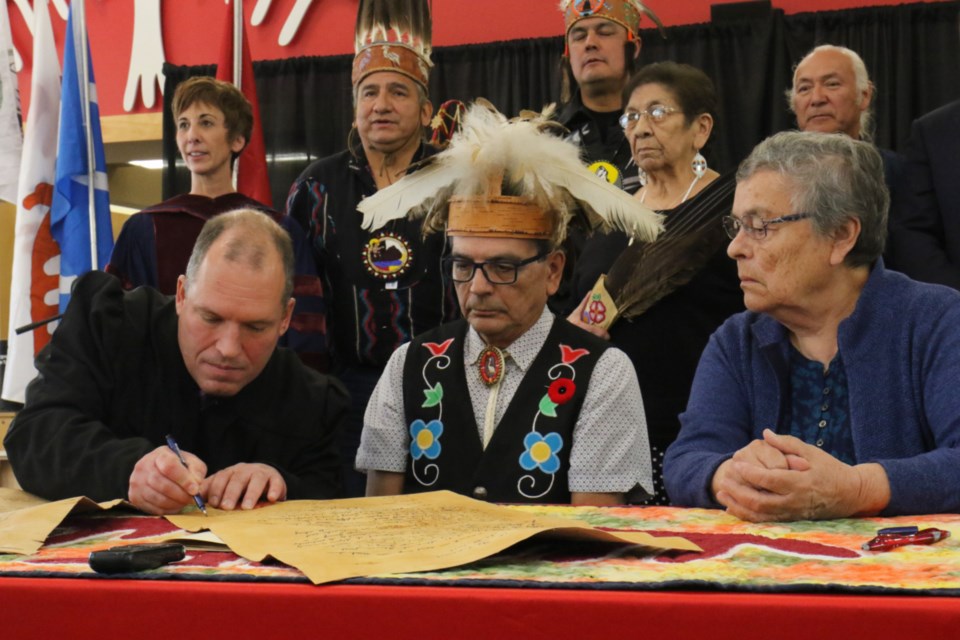Algoma University and Shingwauk Kinoomaage Gamig (SKG) have reaffirmed their partnership by signing an addendum to their 2006 covenant during a ceremony at the university Thursday.
“I think it symbolizes a real future for this community,” said Algoma University president Asima Vezina following the ceremony. “For Algoma University, it’s about moving forward with something that is very sacred.”
The original 2006 covenant between what was then known as Algoma University College and Shingwauk Education Trust was modelled after a two-row wampum treaty in order to signify their working relationship.
SKG board chair Lyle Sayers says that relationship hasn’t been without it struggles throughout the years.
“It’s a reaffirmation of our commitment to work together,” Sayers told SooToday. “Over the years we’ve always had some difficult discussions with Algoma [University] on how we move forward.”
“With the new administration that’s here now, there is a real commitment from the president to work with Shingwauk, and we decided that maybe it’s time that we renew the agreement to, I guess, just make sure that we continue to work together, because a lot of times there’s breakdowns.”
Sayers says the addendum to the original covenant will only help the partnership between SKG and the university going forward.
“Working with Algoma, they have two boards and sometimes we don’t agree with things, and I think this here today will help us as we move forward to understand each other and who we are and how we work together,” Sayers said. “We’re equals - nobody’s better than the other.”
There’s been enough change within both institutions to warrant a revision of the covenant.
Algoma University has grown since gaining its independence, expanding to Timmins and Brampton, while SKG - which was established in 2007 - has been accredited by the World Indigenous Nations Higher Education Consortium, and by the Ontario government as one of nine legally recognized Indigenous institutes of higher learning.
“It’s going to really push us to think differently in many ways about partnership and working together to create something on this site that has probably never been done before,” Vezina said. “When you think about Chief Shingwauk’s vision of the teaching wigwam and what that means today, we have students coming from all over the world, and his vision really was about learning from - and with - each other, taking the very best of our cultures and thinking about and respecting other people’s views and diversity, and what that brought to the table in terms of decision making and planning and thinking.”
“When I think about where this partnership is going, and I think about where we are today, we have people from all over the world to learn in Bawating, and the Anishinaabe people have so much to offer in terms of wisdom, traditional teachings, their connections with the land.”
